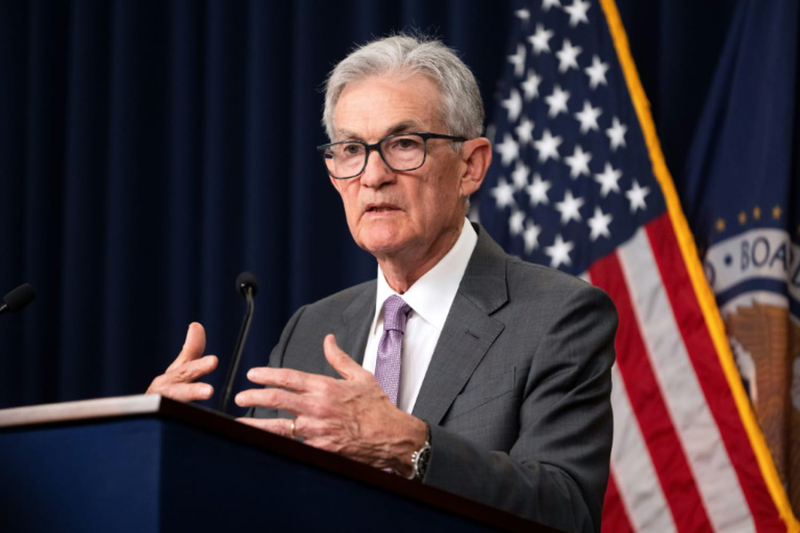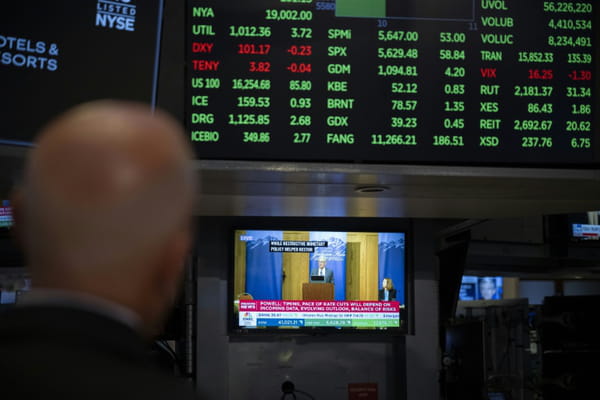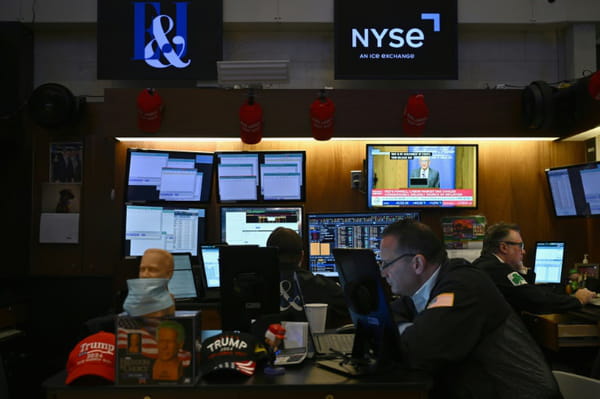“The time has come”: with these words, the chairman of the Reserve US Federal Reserve (Fed) Jerome Powell on Friday gave Jackson Hole (Wyoming) the signal that the markets were waiting for, opening the door wide to a first rate cut at the institution's next meeting on 17 and September 18. “The time has come for a policy adjustment” monetary policy, assured the head of the American central bank in a highly anticipated speech at a symposium bringing together mainly American central bankers in Jackson Hole. “The direction to take is clear, the pace of rate cuts will depend on the data to come, the evolution of the outlook and the balance of risks”, between maintaining full employment and controlling inflation, specified Jerome Powell. His “confidence has increased that inflation is on the path to a sustainable return to 2%”, the target set by the central bank's mandate. In the highly codified language of central bankers, this is indeed a signal that the Fed's monetary policy committee (FOMC) will lower its rates at its next meeting in mid-September, the last before the US presidential elections on 5 November. A television screen broadcasts on the floor of the New York Stock Exchange (NYSE) in New York, on 23 August 2024, the speech by Fed Chairman Jerome Powell in Jackson Hole, in Wyoming © AFP – ANGELA WEISS Mr. Powell's regular speeches had so far given no indication of the possibility of a Fed interest rate cut, an action initially expected by the markets in the first half of the year, before persistent inflation led them to hope for it in September. “He did not give any details as to the size of the upcoming move,” regretted in a note the chief economist of Pantheon Macroeconomics, Ian Shepherdson, who nevertheless noted that “the change in tone compared to the July meeting is striking.” Wall Street reacted rather positively to Mr. Powell's statements, with the S&P500 ending the session up 1.15% and the Nasdaq up 1.47%, while the Dow Jones ended stable. The speech had already been partly anticipated by the markets in recent days. On Wednesday, the publication of the Fed's “minutes”, the report of the previous meeting, had in fact already mentioned this possibility: “The vast majority (of members, editor's note) emphasize that, if the data continue in the expected direction, it would probably be appropriate to ease (monetary) policy at the next meeting”, indicates the text of the central bank. “Responding to risks” “We will do everything in our power to support a solid labor market”, further assured Jerome Powell in Jackson Hole, a sign that employment is returning to the institution's radar, while the pace of job creation is returning to the level it was before the pandemic. Unemployment in the United States © AFP – Samuel BARBOSA The revision on Wednesday of job creations for the past fiscal year – the largest revision carried out since 2009 – showed that the labor market was well into an advanced slowdown. The data published so far had overestimated by more than 800,000 the number of jobs created in the United States between the beginning of April 2023 and the end of March 2024. “This highlights a still positive pace” of job creation but “much more moderate than initially envisaged. The nuance is important because, for economists as well as for decision-makers, it underlines that the economy continues to grow, but at a more moderate pace”, estimates the chief economist of EY, Gregory Daco, interviewed by AFP. The president “Powell noted that there was now sufficient space to respond to the risks that could emerge, in particular in the event of a more marked weakening of labor market conditions”, he estimated in a note. Until now, the data showed a gradual slowdown in job creation, but with unemployment rising to 4.3% in parallel, the risk is now that it will become a major issue again. A television screen broadcasts Fed Chairman Jerome Powell's speech on the floor of the New York Stock Exchange (NYSE) in New York on August 23, 2024, in Jackson Hole, Wyoming © AFP – ANGELA WEISS Fed officials also emphasize, according to the minutes, “a rebalancing of risks related to inflation and employment.” The rise in unemployment has particularly worried the markets, which fear that the “Sahm rule” will be verified again: according to this, the American economy enters into recession when unemployment increases by 0.5 percentage points on average over three months. The increase in July was 0.53 points compared to the previous month. All analysts are now counting on a rate cut in September, the majority envisaging it at 25 basis points but nearly 40% of them see it at 50 points. All rights reserved for reproduction and representation. © (2024) Agence France-Presse




